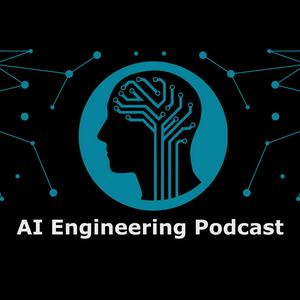SummaryIn this episode of the AI Engineering Podcast Daniel Sodickson, Chief of Innovation in Radiology at NYU Grossman School of Medicine, talks about harnessing AI systems to truly understand images and revolutionize science and healthcare. Dan shares his journey from linear reconstruction to early deep learning for accelerated MRI, highlighting the importance of domain expertise when adapting models to specialized modalities. He explores "upstream" AI that changes what and how we measure, using physics-guided networks, prior knowledge, and personal baselines to enable faster, cheaper, and more accessible imaging. The conversation covers multimodal world models, cross-disciplinary translation, explainability, and a future where agents flag abnormalities while humans apply judgment, as well as provocative frontiers like "imaging without images," continuous health monitoring, and decoding brain activity. Dan stresses the need to preserve truth, context, and human oversight in AI-driven imaging, and calls for tools that distill core methodologies across disciplines to accelerate understanding and progress.AnnouncementsHello and welcome to the AI Engineering Podcast, your guide to the fast-moving world of building scalable and maintainable AI systemsWhen ML teams try to run complex workflows through traditional orchestration tools, they hit walls. Cash App discovered this with their fraud detection models - they needed flexible compute, isolated environments, and seamless data exchange between workflows, but their existing tools couldn't deliver. That's why Cash App rely on Prefect. Now their ML workflows run on whatever infrastructure each model needs across Google Cloud, AWS, and Databricks. Custom packages stay isolated. Model outputs flow seamlessly between workflows. Companies like Whoop and 1Password also trust Prefect for their critical workflows. But Prefect didn't stop there. They just launched FastMCP - production-ready infrastructure for AI tools. You get Prefect's orchestration plus instant OAuth, serverless scaling, and blazing-fast Python execution. Deploy your AI tools once, connect to Claude, Cursor, or any MCP client. No more building auth flows or managing servers. Prefect orchestrates your ML pipeline. FastMCP handles your AI tool infrastructure. See what Prefect and Fast MCP can do for your AI workflows at aiengineeringpodcast.com/prefect today.Unlock the full potential of your AI workloads with a seamless and composable data infrastructure. Bruin is an open source framework that streamlines integration from the command line, allowing you to focus on what matters most - building intelligent systems. Write Python code for your business logic, and let Bruin handle the heavy lifting of data movement, lineage tracking, data quality monitoring, and governance enforcement. With native support for ML/AI workloads, Bruin empowers data teams to deliver faster, more reliable, and scalable AI solutions. Harness Bruin's connectors for hundreds of platforms, including popular machine learning frameworks like TensorFlow and PyTorch. Build end-to-end AI workflows that integrate seamlessly with your existing tech stack. Join the ranks of forward-thinking organizations that are revolutionizing their data engineering with Bruin. Get started today at aiengineeringpodcast.com/bruin, and for dbt Cloud customers, enjoy a $1,000 credit to migrate to Bruin Cloud.Your host is Tobias Macey and today I'm interviewing Daniel Sodickson about the impact and applications of AI that is capable of image understandingInterviewIntroductionHow did you get involved in machine learning?Images and vision are concepts that we understand intuitively, but which have a large potential semantic range. How would you characterize the scope and application of imagery in the context of AI and other autonomous technologies?Can you give an overview of the current state of image/vision capabilities in AI systems?A predominant application of machine vision has been for object recognition/tracking. How are advances in AI changing the range of problems that can be solved with computer vision systems?A substantial amount of work has been done on processing of images such as the digital pictures taken by smartphones. As you move to other types of image data, particularly in non-visible light ranges, what are the areas of similarity and in what ways do we need to develop new processing/analysis techniques?What are some of the ways that AI systems will change the ways that we conceive of What are the most interesting, innovative, or unexpected ways that you have seen AI vision used?What are the most interesting, unexpected, or challenging lessons that you have learned while working on imaging technologies and techniques?When is AI the wrong choice for vision/imaging applications?What are your predictions for the future of AI image understanding?Contact InfoLinkedInParting QuestionFrom your perspective, what are the biggest gaps in tooling, technology, or training for AI systems today?Closing AnnouncementsThank you for listening! Don't forget to check out our other shows. The Data Engineering Podcast covers the latest on modern data management. Podcast.__init__ covers the Python language, its community, and the innovative ways it is being used.Visit the site to subscribe to the show, sign up for the mailing list, and read the show notes.If you've learned something or tried out a project from the show then tell us about it! Email
[email protected] with your story.To help other people find the show please leave a review on iTunes and tell your friends and co-workers.LinksMRI == Magnetic Resonance ImagingLinear AlgorithmNon-Linear AlgorithmCompressed SensingDictionary Learning AlgorithmDeep LearningCT ScanCambrian ExplosionLIDAR Point CloudSynthetic Aperture RadarGeoffrey HintonCo-Intelligence by Ethan Mollick (affiliate link)TomographyX-Ray CrystallographyCERNCLIP ModelPhysics-Guided Neural NetworkFunctional MRIA Path Toward Autonomous Machine Intelligence by Yann LeCunThe intro and outro music is from Hitman's Lovesong feat. Paola Graziano by The Freak Fandango Orchestra/CC BY-SA 3.0


